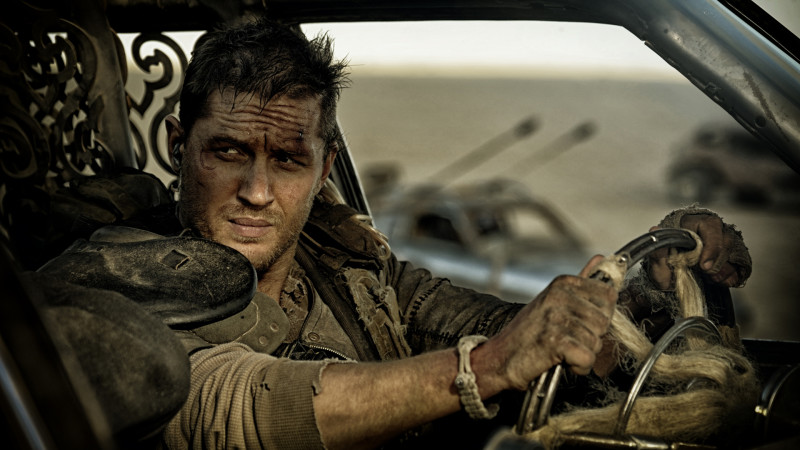What’s the half-life of a post-apocalyptic action film franchise? Potential ticket-buyers born the day the most recent Mad Max movie was released – summer 1985, one weekend after Back to the Future – could be on their second marriages by now. The original Mad Max, from 1979, cost less than $1 million in 2015 money. Though an international hit, today it plays more like a scrappy curiosity than a great action picture, notable for introducing the world to 23-year-old Mel Gibson, whose personal dystopian hellscape was still decades off. Its sequel, released in these United States as The Road Warrior, is the original trio’s only essential entry.
But even that lo-fi, high-impact classic now looks like a mere sketch for the long-under-construction Mad Max: Fury Road, a kinetic, hallucinatory, boldly feminist chase flick that, with its vibrant color palette, harrowing stunt work and show-don’t-tell style of yarn-spinning, leaves every Marvel movie and every Fast & Furious in its irradiated dust. It’s the most visceral blockbuster since Gravity, and it reinvigorates the doomsday genre like no film since The Matrix. Miller, plucked-from-retirement cinematographer John Seale, and editors Jason Ballantine and Margaret Sixel render its overwhelmingly analog derring-do in a balletic and fluid legato, rather than the thudding staccato of a younger, more loudmouthed car-chase franchise that lives its life a quarter mile at a time (and never, ever shuts up about it). If Fury Road has a moral, it’s the same one screenwriting professors have been reiterating since chase movies starred Steve McQueen: Action is character. Words? They’re just talk.
Tom Hardy, replacing Gibson as Max with as little explanation as when James Bond swaps faces, is nearly as tight-lipped in the role as Gibson was. (Miller cowrote the script with Nick Lathouris and veteran British comics artist Brendan McCarthy, who also contributed to eye-popping design work.) When he does speak, he sounds as if he’s just snuck up on Vin Diesel during one of his slurry monologues and swallowed him whole. Mercifully brief narration – from Max himself this time, a change the earlier movies – sets the table: He was a cop, in the last days of civilization. After motorbike-riding droogs ran down his wife and child, he wandered into the desert. Now he’s driven only to survive, so he says, but here he is again, defending the vulnerable against the cruel for a third time.
Make that co-defending. Charlize Theron shares a movie-opening title card with Hardy and pulls a Linda Hamilton-in-Terminator 2, elbowing the title character out of the way to become the film’s true protagonist. She plays Imperator Furiosa, a one-armed “war rig” jockey who paints her face with engine grease before going into battle on behalf of the water-hoarding warlord Immortan Joe. The McGuffins in his installment are, like Soylent Green, people: Specifically, Joe’s five jealously guarded slave “wives,” one of whom is carrying his child. Save for Joe’s son, they’re the only humans in the movie not visibly afflicted by cancer or gout or pallor or a missing limb. Except for Max, of course – and he’s crazier than Don Quixote. (He sees dead people now, and it’s starting to degrade his combat effectiveness.)


